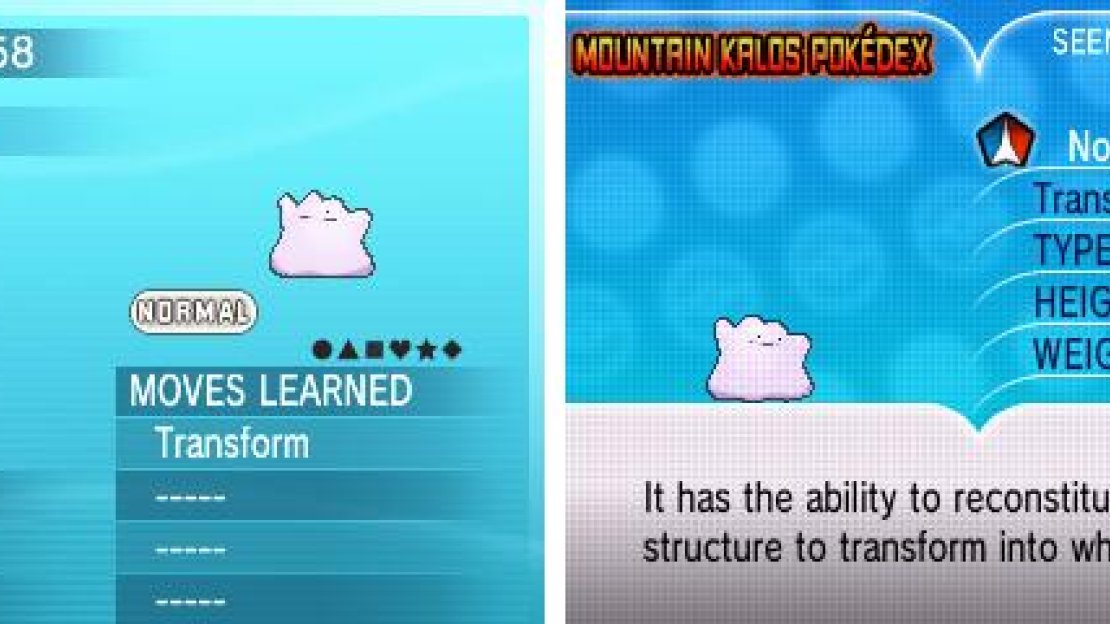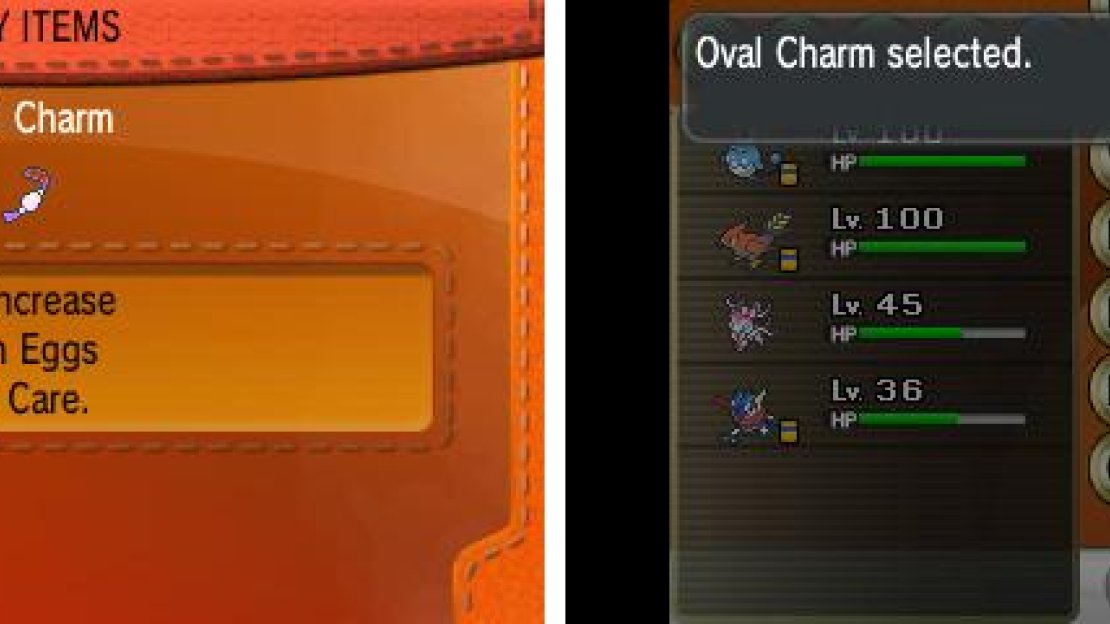Egg Groups¶
So, then, you have two Pokémon you want to breed. As detailed earlier, I said there were exceptions to the rules about gender. Firstly, we have to consider  Ditto . Ditto is almost a wild card in Pokémon breeding, so much so that he gets his own Egg Group (more on that in a bit).
Ditto . Ditto is almost a wild card in Pokémon breeding, so much so that he gets his own Egg Group (more on that in a bit).
Basically, he is allowed to breed with pretty much every Pokémon other than legendary Pokémon - and, even then, the latter has an exception in which breeding Ditto and  Manaphy yields
Manaphy yields  Phione. If it’s of the “No Eggs” group, then Ditto still cannot breed with it.
Phione. If it’s of the “No Eggs” group, then Ditto still cannot breed with it.
Ditto has very few qualms with who it breeds with.
Now that we’re getting onto species, it’s time to talk about Egg Groups . Egg Groups help to determine what Pokémon can breed together for desired species: without proper knowledge of this, you can easily end up with crap Pokémon.
We left this undetailed previously because an obvious rule of thumb is that two Pokémon of the same species yields the same Pokémon or a pre-evolutionary form of it. That much is true. However, knowing Egg Groups widens the field a little: it’s almost impossible to find some Pokémon, after all.
The general principle with breeding is that if the two parents are of the same Egg Group and opposite genders, the child will be the lowest evolution of the female parent. For example: a male  Chesnaught and a female
Chesnaught and a female  Delphox should yield a
Delphox should yield a  Fennekin.
Fennekin.
Again, there are exceptions to even that. This mostly comes through from species that only have Pokémon of a single gender. A key example are the male and female Nidoran Pokémon - they’re of the same Egg Group, sure, but you’d only get Nidoran female under the above conditions, no matter how many Eggs.
The exception is that, if two gender-exclusive species are bred, then there is a 50% chance of the resultant Pokémon being either species.
Mechanics of the Egg¶
Let’s first discuss getting the Egg. When you speak to the Daycare Man before an Egg has appeared, he can say a number of things. Depending on what he says - which itself is independent to certain conditions - there is a specific chance of finding an Egg.
Generally, using traded Pokémon or those of the same species is best. Eggs can potentially be found with every 256 steps in the field. So, what does he have to say?
(Keep in mind “ID” refers to both the seen ID on your Trainer Card and the hidden Secret ID that you never know of. Basically, there are 100,000 values for each, and 10,000,000,000 total permutations, so you can basically consider it as “traded”.)
| Condition | Do They Get Along? | Chance of Egg |
|---|---|---|
| Different Egg Groups | The Pokémon prefer to play with others | 0% (generally) |
| Different Species, Same ID | The two Pokémon don’t like each other | 20% |
| Same Species, Same ID | The Pokémon seem to get along | 50% |
| Different Species, Different ID | The Pokémon seem to get along | 50% |
| Same Species, Different ID | The two get along very well | 70% |
Just having the Oval Charm in your bag will boost your egg-finding rate.
Note that the Oval Charm , found by completing the Kalos Pokédex and going to Professor Sycamore, increases the rate at which you can find Eggs. Specifics are still unknown on that though.
Remember how I earlier glossed over Egg hatching by simply saying it would hatch in 5,000 ~ 30,000 steps? There is a more specific way to calculate this:
What does this mean? Basically, there is not much variance in the amount of steps it takes to hatch an Egg. At most, the variance is (B + 256) - that means the difference when “N=0, Y=255” and “N=1, Y=256” will equal the number of base steps, plus 256.
The highest base step value is 120, so basically 400 steps is the general variance. Most of the time, you’ll see a formula of “(B + 1) × 255”, the most common formula we’ve come across. Again, it’s just walking, so it’s not like it matters, really.
Also note that some abilities can reduce the number of steps taken. If a Pokémon in the party has either the Magma Armor or Flame Body abilities, the steps needed are halved.


No Comments